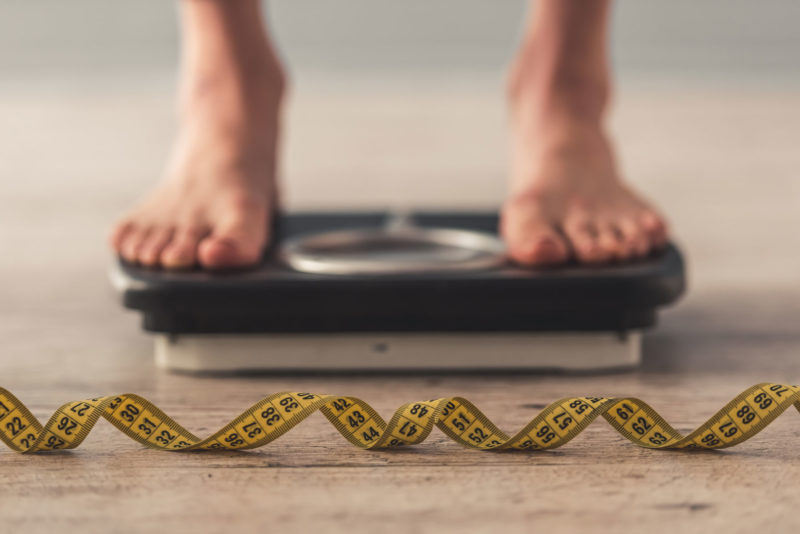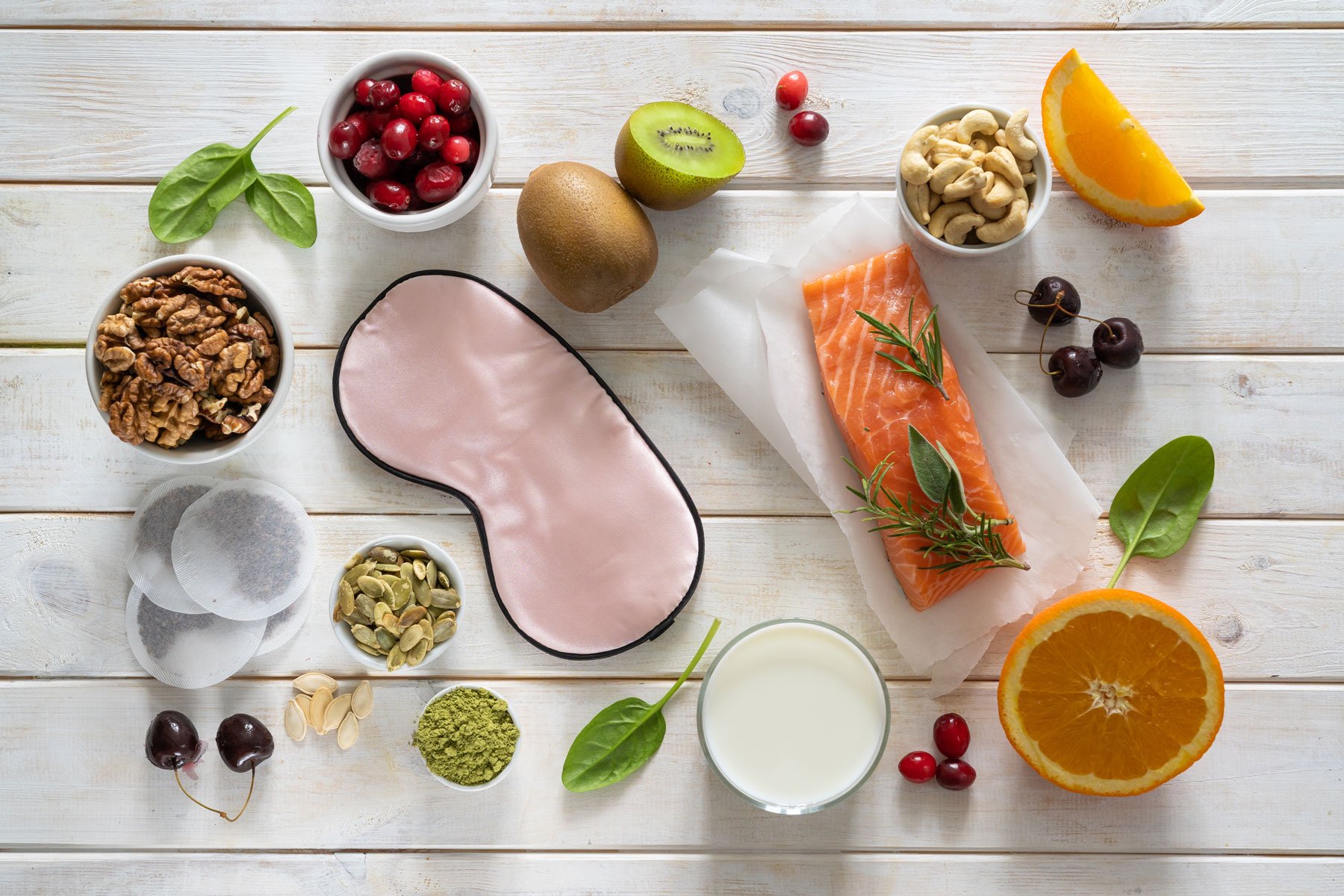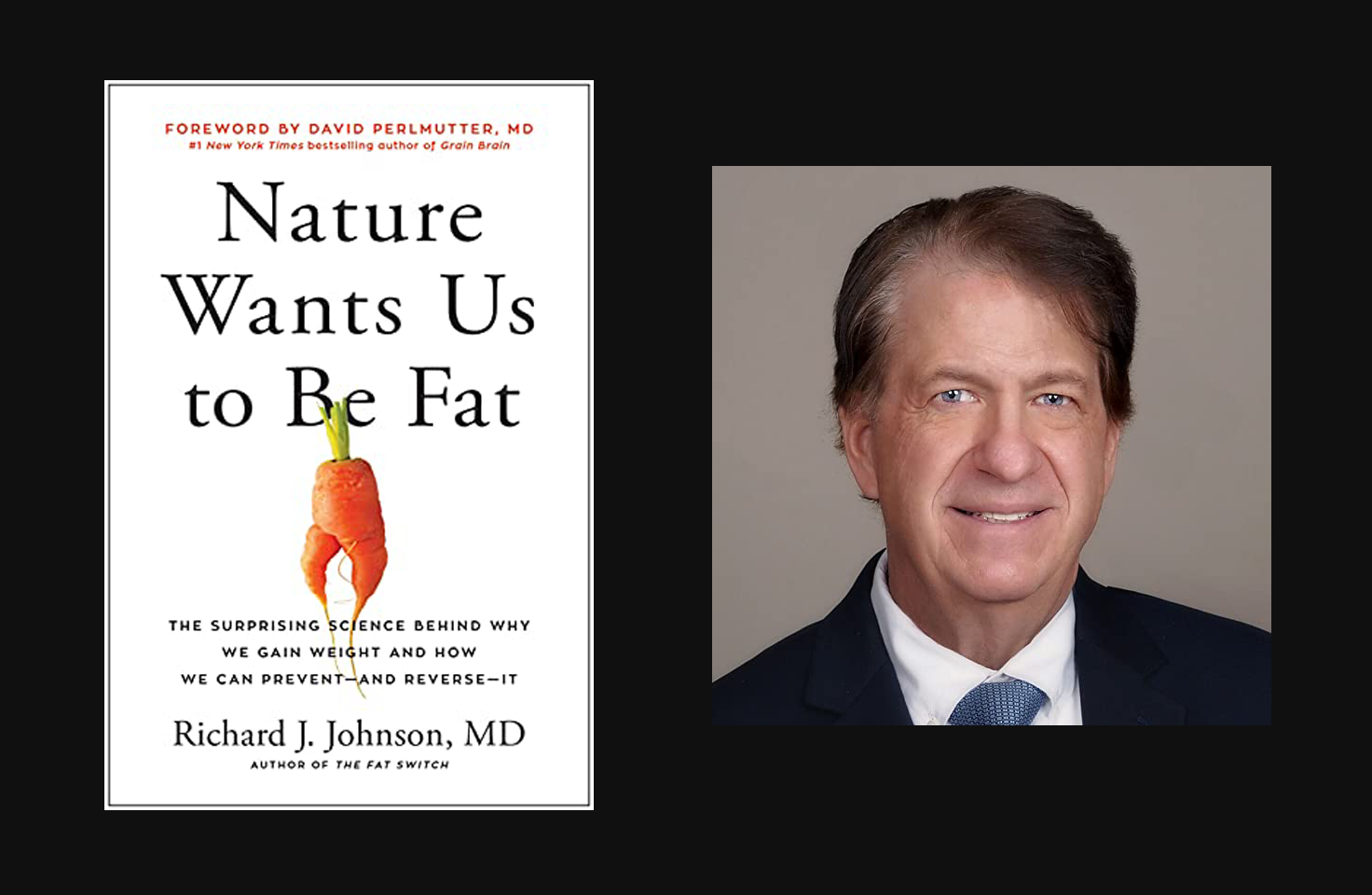It’s a message we’ve all heard a million times over: Eat less, move more, and you’ll lose weight. Or to flip it on its head, eat more calories and you’ll gain weight, eat less, and you’ll lose it. It would be nice if the problem of weight gain (and loss!) were such a straightforward equation. Alas, as many of us know firsthand, losing weight just isn’t that simple. Perhaps unsurprisingly, it’s not easy to explain why we gain it, either.
There’s no question that people today weigh a lot more on average than they did 40 years ago. Worldwide obesity rates have tripled since 1975, the World Health Organization reports. What’s less clear is why. Over the last few years, two models that aim to unpack what drives excess weight gain have dominated nutrition headlines. Both have been honed and refined, partially rewritten, and described anew in recent, comprehensive summary papers; both models have energetic proponents who’ve been critical of one another. Which of the models strikes more closely at the truth is the question at the center of an ongoing and sometimes heated debate. What’s indisputable, though, is that the science of obesity is still largely unresolved and ripe for investigation. The good news is we know more today about how the body responds to food stimuli than ever before — and we’re learning more every day.
Here’s everything we understand so far about these two models of obesity.
The energy balance model (EBM)
Understanding the establishment view
“Energy can neither be created nor destroyed.” That’s the idea of conservation of energy. It’s also the basis for the energy balance model, or EBM, the theory of weight gain that has dominated nutrition discourse since the 1950s and is still espoused by the majority of the nutrition establishment today. Energy from the calories we eat must go somewhere, is the idea — used as fuel or stored. Humans store a little energy in our muscles and liver, but most of it as fat. Weight gain happens when we eat more calories than we burn or when energy is “out of balance.” In this framework, where calories come from—their quality—matters, but not necessarily as much as the quantity of calories consumed. Put another way, to avoid gaining weight, calories eaten (“calories in”) must not exceed calories burned (“calories out”).
What proponents of EBM argue, however, is that overall calorie intake is still more important for weight gain than the source of those calories.
EBM proponents point out that the worldwide rise in obesity rates correlates with the explosion of ultra-processed foods available today. Inexpensive, convenient, high-calorie, ultra-processed foods are ubiquitous and yummy (or “palatable,” in obesity study speak) and might even be addictive. Some research suggests that highly processed, palatable foods with added fat and carbs (think cheesy pizza) may activate the brain’s reward centers like opioids do.Sometimes we’re conscious of this reward center activation (you may feel a sense of pleasure while noshing on a piece of sweet, juicy watermelon), but sometimes we’re not. Signals from the gut may impact the brain without our even knowing it.
More complicated than “a calorie is a calorie”
As obesity research has evolved, so too has the EBM. The latest synopsis (with lead author Kevin Hall, PhD, integrative physiology section chief at the National Institute of Diabetes and Digestive and Kidney Diseases at the National Institutes of Health (NIH) no longer posits that a calorie is a calorie is a calorie. Instead, it acknowledges the difference in metabolic effects of consuming a calorie from sugary soda (a refined carb) differ from the effects of consuming a calorie from grilled chicken (a lean protein).
What proponents of EBM argue, however, is that overall calorie intake is still more important for weight gain than the source of those calories. And they have evidence to back that up. As the new EBM notes, study after study comparing people on high-carb, low-fat diets and people on low-carb, high-fat diets show a negligible difference in the amount of weight people on both diets can lose.
The newest EBM model also cites emerging research on gut and brain interaction. Mouse research, in particular, is fast-advancing—telling scientists a lot about how the mammalian brain receives information about food and uses that info to regulate calorie consumption. In one study, exposure to a high-fat diet essentially rewired mice’s brains to no longer want or be sated by a more nutritionally balancedone—even after the high-fat diet had been taken away, and there was nothing else for the mice to eat but the more balanced food.
Where critics argue the new EBM falls short
Among the EBM’s fiercest critics are David Ludwig, MD, PhD, a professor of pediatrics at Harvard Medical School, and author and journalist Gary Taubes. They are two of the architects of the latest iteration of the carbohydrate-insulin model, or CIM, a different obesity paradigm gaining traction (more on the CIM in a minute). The CIM camp has several qualms with the EBM, among them:
1. The EBM’s central, practical takeaway—that eating less and moving more should help most people lose weight—hasn’t made a dent in the obesity epidemic. “The failure to make meaningful progress either treating or preventing obesity cannot be ignored,” Taubes wrote in an editorial earlier this year. If eating less and moving more was the answer to the epidemic, they say, we would’ve solved it already.
2. It describes a possible cause but not the mechanism. One of the Ludwig camp’s core complaints about the EBM is that it doesn’t dig deep enough into the physiological causes of obesity. Today, the average man weighs around 30 pounds more than the average man did in 1960. The EBM calls out the changes in our food environment (the explosion of ultra-processed foods) and how those changes parallel the rise in obesity rates but fails to explain how those changes “have dysregulated the biological systems that counteract energy imbalance and resist weight change,” Ludwig and colleagues write. There’s something about the food, both sides say, that’s rejiggering our metabolism. But the CIM camp says the EBM folks haven’t homed in on what that is.
3. Some EBM feeding studies may need to be longer. It takes the body at least three to four weeks to adjust to a low-carb, high-fat diet, Ludwig has said. But an oft-cited feeding study conducted by Hall and his colleagues may not have been long enough to show what Ludwig and his side consider meaningful results—especially those that suggest how people gain weight over the long term. In a lecture at Harvard’s T.H. Chan School of Public Health earlier this year, Ludwig called out this famous study by Hall and his colleagues that sought to see whether people given unlimited access to a diet of ultra-processed foods would eat more calories than a group of people given unlimited access to a diet of unprocessed foods. At the end of a two-week study period, the former group consumed more calories and gained more weight than the latter.
What Hall and his co-authors didn’t note, Ludwig pointed out, is that at the end of the feeding period, both groups were trending in the same direction, calorie consumption-wise. With more time, Ludwig claims, the groups might have ended up eating around the same amount—making it unclear whether ultra-processed foods were indeed what was driving weight gain and overconsumption.
When insulin levels are high—fat can’t be readily burned.
4. The new EBM doesn’t offer up testable hypotheses. A good scientific model, Ludwig said in his Harvard lecture, offers testable hypotheses. “Experimental models need to focus on key causal drivers, both to inform research but also intervention,” he said. But the latest EBM’s complexity makes it almost impossible to unwind and test. Without testable hypotheses that could generate practical interventions, the EBM simply isn’t very useful.
Learn More:
The carbohydrate-insulin model (CIM)
“A calorie distribution problem”
Since the 1920s, researchers have wondered whether foods that cause significant spikes in blood sugar—think sweets and the like—fool the brain into thinking the body is hungry and set the scene for overeating. It’s been called the “crash and crave” effect: To deal with all that sugar, the pancreas releases a big bolus of insulin, causing blood sugar to crash and, not long after, hunger pangs and fatigue. That’s not a new idea. What is, CIM supporters say, is the notion that insulin-spiking carbs may be able to reprogram the body to want to store fat.
Ludwig’s camp has put forth a script-flipping proposition. It’s not that people are gaining weight by eating too much and not exercising enough, they say. Instead, something about the food—all those high-glycemic snacks and treats in the Western diet—is taxing the body hormonally, predisposing it to store fat and (somehow) spurring more consumption of those foods. “Overeating isn’t the primary cause of obesity,” Ludwig wrote in a Washington Post op-ed last July. “Instead, the process of gaining weight causes us to overeat.” A radical idea.
So what’s the mechanistic rationale for it? The CIM camp explains that high-glycemic foods trigger a hormonal response that uniquely causes the body to “partition” energy. “Obesity isn’t an overeating problem; it’s a calorie distribution problem,” Ludwig writes in his Washington Post op-ed. “Too many calories from each meal [are] being siphoned off into fat tissue and too few remaining in the blood to satisfy the energy needs of the body.”
It’s worth reviewing here what a high-glycemic meal does to the body: it causes insulin levels to spike. In response, the liver and muscles store what glucose they can for energy. But what’s left over gets turned into triglycerides (often in the liver) and released into the bloodstream, destined for the body’s fat cells. The body burns fat—stored energy—only when readily available fuels (e.g., glycogen in the muscles) are depleted and insulin levels in the bloodstream are low. So when insulin levels are high, you guessed it—fat can’t be readily burned. Repeating this sequence of events again and again can lead to insulin resistance, which often coincides with obesity.
In many cultures around the world, high-carb diets are the norm—yet some of those cultures’ obesity rates are low.
CIM supporters argue that this hormone-mediated cascade of events is the primary driver of the positive energy balance that precedes obesity. But there’s a complex array of other factors that probably contribute to obesity as well, they say. Muscle insulin resistance, chronic inflammation, and changes to the microbiome may also play roles — although it’s unclear which matters most.
The CIM camp points to a growing body of research that shows that high-fat diets result in more weight loss than high-carb diets over the long term. Other research suggests that some people may be more susceptible to carbs than others and, as a result, more likely to put on weight when they eat them. Ludwig’s camp concedes that more research needs to be done, but they say those ideas alone deserve our attention.
Where the CIM falls short
CIM critics are quick to call out the model’s logical inconsistencies and scientific shortcomings. Some of the most compelling critiques include:
1. In many cultures around the world, high-carb diets are the norm—yet some of those cultures’ obesity rates are low. In the CIM paradigm, if consuming high-glycemic foods can reprogram the body to want to store fat, cultures with high-glycemic diets should experience high obesity rates. But several researchers have noted this often isn’t the case. On his blog, neuroscientist Stephan Guyenet, PhD—an author and former obesity researcher who co-wrote a JAMA Internal Medicine perspective on the CIM with Hall in 2018—describes a study of the Kitavans, inhabitants of an island in an archipelago in Papua New Guinea, who subsist on starchy plants (think potatoes and cassava), fruit, veggies, seafood, and coconut. Despite 69% of their calories coming from carbs (compared to roughly 50% in the U.S. diet), Kitavans are lean, which doesn’t fit the CIM.
Japan is yet another example of a place where carbs are a dietary cornerstone, but obesity isn’t much of a problem. Sticky rice, a very high-glycemic food, is a staple of the Japanese diet; in 1975, a whopping 62% of the Japanese diet came from carbs. And yet, until the Japanese adopted more foods from the Western diet in the latter part of the last century, obesity rates in Japan were exceedingly low. (Notably, they’re still among the lowest in the world.)
Ludwig has addressed this criticism by arguing that cultural differences in average physical activity levels may influence those cultures’ population-level obesity rates—a counterargument that Guyenet says isn’t airtight. The Kitavans, he points out, are only slightly less sedentary than Americans. So differences in physical activity don’t fully explain why more Kitavans haven’t developed obesity due to their high-carb diet.
2. Several studies have shown that low-glycemic-load diets aren’t much better for long-term weight loss than higher-glycemic-load diets. The CIM posits that low-glycemic-load diets may be superior for weight loss. Hall and his colleagues note that trials haven’t borne that out. “A meta-analysis of 53 randomized controlled trials of ≥1-y duration evaluated the effects of low-fat compared with higher-fat dietary interventions and found no significant difference in mean weight loss comparing the low-fat with higher-fat diets when dietary interventions were delivered with similar intensity,” Hall and his colleagues write in the new EBM, “An updated network meta-analysis of 121 randomized controlled trials found no significant difference in mean weight loss at 6 mo comparing low-fat, low-carbohydrate, or moderate-carbohydrate with usual diet controls.”
3. Mouse studies have refuted the CIM’s foundational premise that high-glycemic-load diets (and the insulin spikes they cause) are core drivers of obesity. Hall and Speakman noted in a 2021 Science perspective that conducting long-term, randomized, naturalistic feeding studies in human subjects is inherently tricky. It’s hard, for example, to tightly control how people eat outside a laboratory setting. That’s why so much dietary research happens in animals and why—when it comes to some obesity research questions—animal data is often the best we’ve got.
And in animal studies, the CIM simply hasn’t held up. In a 2019 study that exposed mice to 24 different diets, mice on high-glycemic diets ate “fewer calories and gained both less body weight and body fat despite higher postprandial insulin,” Hall and Speakman wrote in Science. And the studies weren’t too short. The mice were given the diets for 12 weeks — the rough equivalent of nine years for humans.
4. The CIM suggests that glucose and free fatty acids in the bloodstream are reduced during weight gain. But there’s no evidentiary basis for that. In obesity, glucose and free fatty acids are usually elevated in blood plasma. But the CIM describes a novel “dynamic phase of obesity development” during which plasma levels of fuels such as glucose and free fatty acids are reduced, causing hunger, reduced energy expenditure, and slowing of the metabolism that the CIM argues precede weight gain. The only problem with this idea, Guyenet notes on his blog, is that this “dynamic” stage has never been observed. In fact, Guyenet dug up a pair of mouse studies in which free fatty acids were elevated during weight gain.
5. Genes probably matter more than the CIM accounts for. Obesity is highly heritable. As Guyenet points out, one recent, extensive, genome-wide analysis of 700,000 people found 941 gene variations associated with BMI. The same study noted that “BMI-associated genes are mostly enriched among genes involved in neurogenesis and more generally involved in the development of the central nervous system.” In other words, genes that influence body composition don’t have a clear link to insulin-signaling or fat cell function, which suggests the latter may be a less important driver of weight modulation than the CIM would have us believe. Hall et al., too, make a related point in the EBM: Among reported human diseases, “No genetic disorder primarily affecting the adipocyte or enhanced insulin action has been reproducibly reported to cause obesity.” (Hall has a counterargument using mouse studies.)
6. The latest version of the CIM all but abandons the thrust of its former thesis that carbohydrate-driven insulin action on fat cells drives hunger, reduces energy expenditure, slows metabolism, and leads to weight gain. This undermines the CIM’s paradigm-shifting suggestion that excess fat leads to positive energy balance, not the other way around.
This critique strikes at the heart of what the CIM proposes. “Precisely how carbohydrate-driven insulin action on adipose tissue drives hunger or slows metabolic rate is not specified by the CIM,” Hall et al. write in the latest EBM. Notably, they point out, newer versions of the CIM back away from that central claim, offering a more nuanced (and complicated) explanation that “considers that substrate partitioning and fat deposition are determined by the integrated actions of insulin, together with other hormones and autonomic inputs, in multiple organs, not just adipose tissue.” Here again, Hall et al. note, “the proposed mechanisms involved in this integrated, multiorgan, multi hormone CIM remain unclear.”If overeating isn’t necessarily a function of excess fat from a high-glycemic diet, as the CIM posits, then the neat reversal of causality at the center of the CIM falls apart. In other words, if several “parallel pathways” contribute to weight gain—not just insulin-driven fat accumulation and the vicious cycle of overeating it spurs, as claimed in the CIM—then the CIM’s foundation gets very shaky.
The Takeaway
The conversation around what causes obesity is still wide open. In October 2022, the Royal Society, the United Kingdom’s national academy of sciences, convened a meeting of top obesity researchers from around the world. Among them were Speakman and Hall, two of the meeting’s organizers, and Ludwig, who participated with Hall in a wide-ranging panel discussion that covered an array of topics in obesity research. “This is an important problem, and yet we really still don’t know what causes it,” Speakman said during his opening remarks. “I think having a discussion meeting like this… at least it opens up all the areas where we’re not clear [and] tells us what we need to do.” On the panel, Hall called for more research into the mechanisms of obesity, while Ludwig voiced the need for better-funded, more rigorous, longer-lasting randomized trials of low-carb diets.
As frustrating scientifically and practically as the problem of obesity is, there are still things you can do to keep yourself healthy and lower your risks for obesity, other chronic diseases, cancers, and premature death. Eating ultra-processed foods, for example, has long been associated with a higher risk for obesity. Eating for stable blood sugar, exercising daily, getting enough sleep, and minimizing stress are all foundational to optimal metabolic health.
Interested in using a CGM to help manage your weight?
Levels, the health tech company behind this blog, helps people improve their metabolic health by showing how food and lifestyle impact your blood sugar, using continuous glucose monitoring (CGM), along with an app that offers personalized guidance and helps you build healthy habits. Click here to learn more about Levels.









